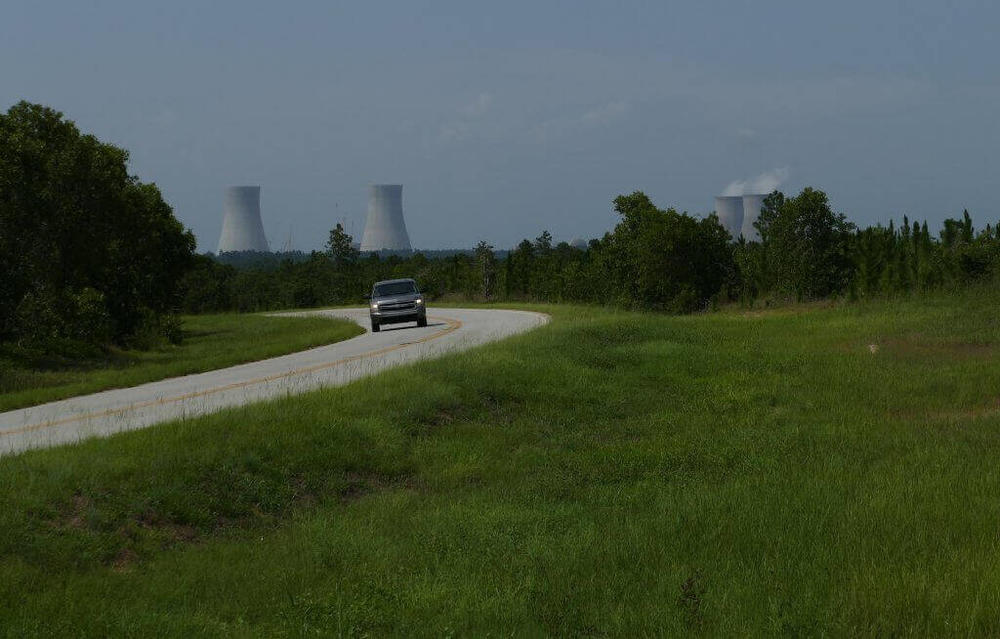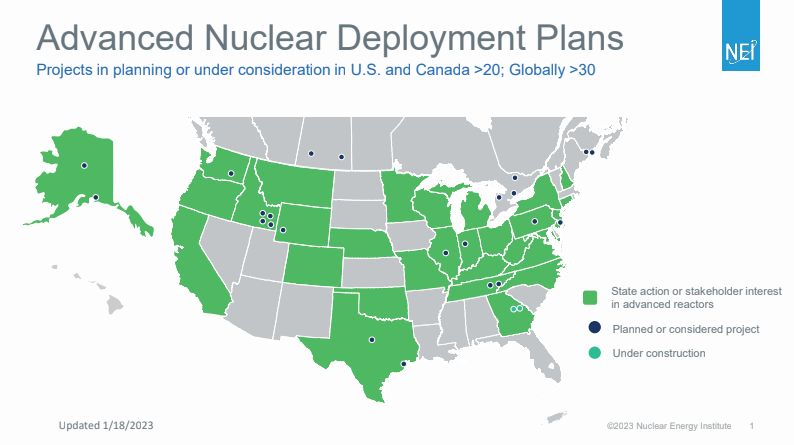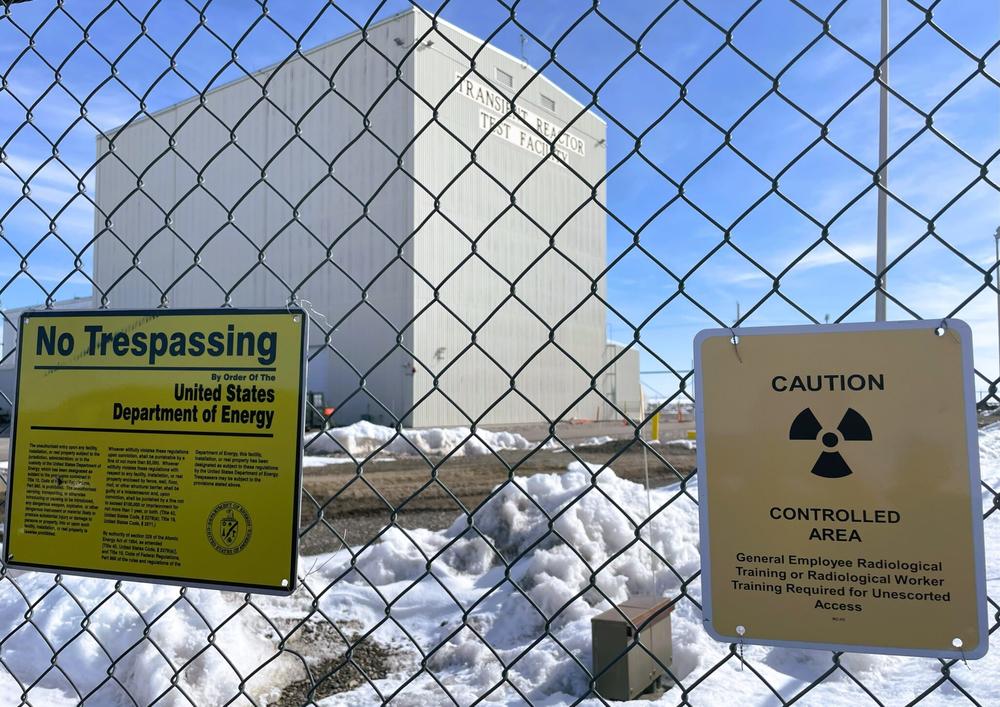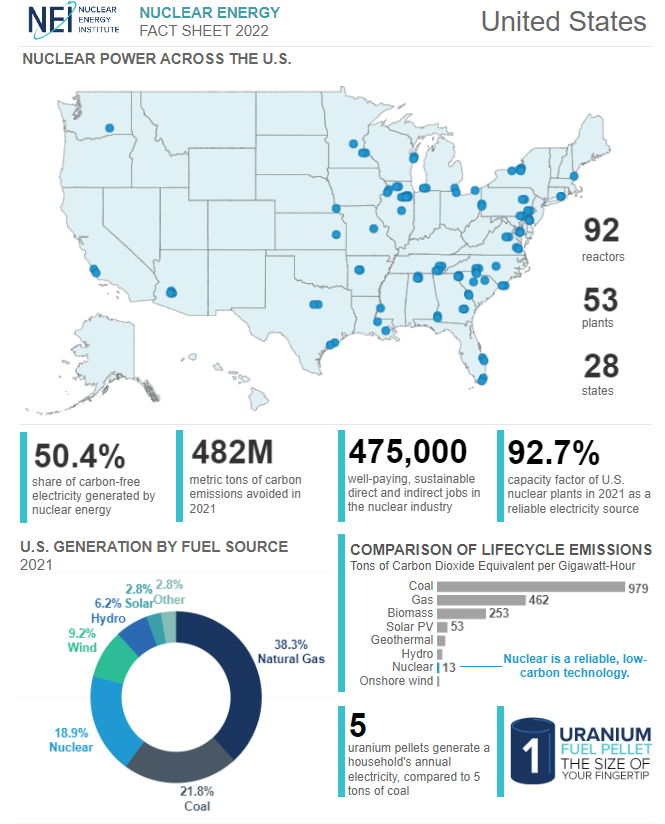
Caption
New nuclear units at Georgia Power’s Plant Vogtle, about 30 miles southeast of Augusta, are at last nearing completion after years of delays and billions of dollars in cost overruns.
Credit: John McCosh/Georgia Recorder

New nuclear units at Georgia Power’s Plant Vogtle, about 30 miles southeast of Augusta, are at last nearing completion after years of delays and billions of dollars in cost overruns.
IDAHO FALLS, Id. — At the sprawling array of laboratories and test facilities in the southeastern Idaho desert where the U.S. nuclear power industry was born more than 70 years ago, past, present and future are converging.
Not far from where the first reactor to ever produce usable electricity made history in 1951, Idaho National Laboratory nuclear engineer Yasir Arafat and his team have been working to design, build and fire up what they hope will be the world’s first modern “microreactor.”
The MARVEL (Microreactor Applications Research Validation and Evaluation) project, expected to be built by the end of 2024, is part of a new wave of advanced nuclear technology that energy start-ups, electric utilities and state and federal policymakers are eyeing to maintain reliability in a decarbonizing grid, power hydrogen production, replace jobs and tax revenue in struggling towns where coal power plants are closing and bring zero-emissions electricity to remote areas of the globe.
“Think about one energy source that can give you 24/7 reliable carbon-free electricity on demand regardless of geographical location — that’s nuclear,” said Arafat, who is pushing to achieve “criticality” (when the fission reaction is self-sustaining) in the small 100-kilowatt reactor. “My hope is that companies would actually take this, leverage this technology and actually come up with commercial versions that can be cost competitive with solar and wind and oil and gas and be able to deploy them everywhere.”
New nuclear units at Georgia Power’s Plant Vogtle, about 30 miles southeast of Augusta, are at last nearing completion after years of delays and billions of dollars in cost overruns. Per Georgia Power they will be the first new nuclear units built in the U.S. in the past three decades. (The Tennessee Valley Authority brought a new reactor online in 2016, which, at the time, was the first new nuclear generation in 20 years, but that facility, Watts Bar Unit 2, was originally launched in 1972 before work was suspended in 1985).
The vast majority of the United States’ 92 existing nuclear power reactors were built in the 1970s and 1980s, after which new construction fell off sharply. Why did that happen?
John Wagner, a nuclear engineer who is now the director of the Idaho National Laboratory, says the Three Mile Island partial meltdown in 1979 was a factor, but not in the way most people might think. No one was hurt in the incident and the Nuclear Regulatory Commission, after numerous studies and sampling by other agencies and independent organizations, concluded that the “small radioactive releases had no detectable health effects on plant workers or the public.” But after the accident, Wagner said, the industry coalesced on a series of new safety protocols not just for new reactors but those already under construction.
“Was it a killer by itself? No. But it added cost,” he said.
Coupled with inflated power demand projections that didn’t materialize and interest rates climbing above 10% in the early 1980s, it was enough to put the brakes on new nuclear power plant construction, Wagner said.
“It pretty much just killed everything,” Wagner said. With it went supply chains and construction expertise that made it tough for the few projects that did go forward in later years to come in on time and on budget.
“We lost all our muscle memory, all our experience building these systems,” he said.
Wagner acknowledged that nuclear power has a safety problem in the public perception, even though data suggests it’s one of the safest forms of power generation in terms of deaths from accidents and pollution. With the ongoing failure of the federal government to find a permanent repository for the nation’s nuclear waste, spent fuel will continue to be managed safely onsite at nuclear power plants, like it has for decades, he added.
“People are concerned about it. We absolutely can manage it safely,” he said. “We’ve been managing it safely and securely.”
At the lab and among boosters across the country, expectations are high for new nuclear reactors. But critics question whether nuclear power, historically slow and expensive to build, will be left behind by the rapid deployment of cheaper renewables and development in battery storage and other technologies.
“We should have a very clear-eyed view of what the costs of these prototypes are, what their attributes are, what their flaws are and whether or not it has a viable place in a competitive and low carbon power market,” said Geoffrey Fettus, senior attorney in the nuclear, climate and clean energy program at the Natural Resources Defense Council, which is skeptical of the hype around the nuclear industry. “And it’s going to take a lot of years to figure that out.”

New nuclear projects under planning or consideration in the U.S.
Representatives from 23 states have joined a new collaborative organized by the National Association of Regulatory Utility Officials and the National Association of State Energy Officials intended to help state leaders and regulators answer questions surrounding new nuclear power generation. The Georgia Public Service Commission is a member.
Some states may have never had a nuclear power plant within their borders and, even in the states that do, some utility commissions may not have any staff left who dealt with a reactor project, since almost all of them were built decades ago, staffers from the national organizations said in an interview.
“There’s a certain proactiveness to this. The state energy offices and public utility commissions are interested in understanding the technology while it’s not yet deployed,” said Kirsten Verclas, senior managing director at NASEO, adding that states want to “get ahead” of some of the information before a utility comes to regulators for approval of a new nuclear project.
Utility commissions, in particular, have “a lot of questions” about cost, spent fuel and waste management and translating that into “just and reasonable” electric rates, said Kiera Zitelman, a technical manager at NARUC.
“They’re really concerned with how to do that,” she said. But some state officials also see opportunity, from staving off reliability worries as wind and solar become larger parts of the electric generation mix to the jobs and revenue new nuclear power plants can bring.
“There’s a lot of interest in how advanced nuclear can provide economic development and workforce development,” said Kelsey Jones, a senior program manager at NASEO.
In January, the Nuclear Energy Institute, a nuclear industry policy group, said there were 16 advanced nuclear projects in the planning or consideration stages in 10 states.
And many states have adopted or are considering legislation or regulations creating zero-emission credits for carbon-free electric generation, incorporating nuclear power into clean energy requirements and state energy plans, as well as pushing for carbon pricing, tax exemptions and other policies that could benefit the nuclear industry. Last year’s federal Inflation Reduction Act contains production tax credits to keep existing reactors — which provide about half of the nation’s carbon-free power — running, major tax incentives for new advanced reactors and $700 million to develop a domestic supply chain for the high-assay low-enriched uranium fuel the advanced reactors will need.
A federal Department of Energy report from March says that modeling suggests that, “regardless of level of renewables deployment” the U.S. will need between 550 and 770 gigawatts of additional “clean, firm capacity” to reach the Biden administration’s net-zero carbon goals. Right now there’s about 100 gigawatts of nuclear power generation in the nation.
“Nuclear power is one of the few proven options that could deliver this at scale, while creating high-paying jobs with concentrated economic benefits for communities most impacted by the energy transition,” the report says.
That all amounts to a lot of momentum for an American industry that in many respects had largely gone dormant for decades. New nuclear power plants have been vanishingly rare over the past 30 years, and the few projects that have been attempted have been plagued by massive cost overruns, scandal and failure.
“You’re seeing interest in new nuclear for a number of reasons. But foremost among them is the decarbonization imperative,” said John Kotek, senior vice president of policy development and public affairs at the Nuclear Energy Institute. More than 80% of U.S. electric customers are served by a utility that’s pledged to go largely carbon free, Kotek said. Wind, solar and battery storage at present can only get you so far, which makes nuclear an attractive option to offset the intermittency of renewable power, which is reliant on the wind and the sun, he added.
In particular, small modular reactors — which are expected to be able to built in factories and shipped to sites for shorter construction times and theoretically reduced costs and have the ability to be scaled up to meet different power demands (from tens of megawatts to hundreds) — are seen as an attractive option to replace coal plants and potentially pair with renewables.
Another recent Department of Energy report said that hundreds of coal plant sites could convert to nuclear, availing themselves of the grid connections and perhaps even some of the plant equipment to shave costs. The federal Nuclear Regulatory Commission certified the first small modular reactor design, for Portland, Oregon-based company NuScale Power, earlier this year.

Idaho National Laboratory nuclear engineer Yasir Arafat talks to reporters at the lab’s Transient Reactor Test Facility, which will play host to the MARVEL microreactor project. The project is on pace to be the world’s first modern microreactor and will be about the size of a sedan. The reactor is expected to be connected to the world’s first nuclear microgrid by the end of 2024.
NuScale sees a wide range of applications for its VOYGR power plant design, which can contain up to 12 power modules for a maximum capacity of more than 900 megawatts, including taking the place of the scores of U.S. coal power plantsthat may retire by 2035, complementing intermittent renewable power generation and providing power to critical infrastructure like hospitals, military bases, data storage centers and industry. NuScale says the plant will use just a fraction of the land (.05 square miles, as opposed to 94 square miles for wind and 17 for solar) that a comparable output wind or solar development requires.
“The NuScale plant is the only near-term deployable and commercially viable advanced nuclear generation solution for states across the country that seek a reliable, safe, and carbon-free solution,” said Diane Hughes, NuScale’s vice president of marketing and communications.
But there’s also some doubt about whether an industry that’s struggled so much can rise to the challenge of meeting intense design, licensing and cost challenges.
“Right now, SMRs don’t exist,” Fettus said. “There is not one that is producing power for the domestic grid. … We don’t see deployment happening until the 2030s at the earliest.”

The Idaho National Laboratory’s Transient Reactor Test Facility will play host to the MARVEL microreactor project, which lab officials say is on pace to be the world’s first modern microreactor and will be about the size of a sedan. The reactor is expected to be connected to the world’s first nuclear microgrid by the end of 2024.
Fettus noted that it took NuScale more than six years to get NRC approval. It is the first small modular reactor design approved by the U.S. Nuclear Regulatory Commission.
“This is not about the NRC being slow. That’s about changes in the design and the serious process of getting a design approved when you’re fissioning atoms,” he said, noting that new nuclear reactors will be competing with emerging low or zero-carbon technology like long duration battery storage, natural gas plants with carbon capture and others. “There’s no evidence that they’ll get cheaper at scale. … We’ll build a few on subsidies. The question is going to be whether they can compete in the energy markets.”
NuScale says its first American plant will be the Carbon Free Power Project, a 462-megawatt nuclear project that will be owned by Utah Associated Municipal Power Systems — which provides whole electricity to community-owned power systems throughout the Intermountain West— and built on Idaho National Laboratory land. More than $1 billion in U.S. Department of Energy funding has gone to development and the plant is expected to be fully operational by 2030. However, construction cost estimates for the project have also climbed, from roughly $5 billion in 2021 to $9.3 billion. Per UAMPS, the project will get $4.2 billion in Department of Energy cost-sharing funds and benefits from the Inflation Reduction Act.

A fact sheet from the Nuclear Energy Institute shows existing nuclear reactors for electric generation across the United States.
‘
Nevertheless, there’s little doubt at the Idaho National Laboratory that nuclear power is on the cusp of a major resurgence.
During a media tour this month at the 890-square mile national laboratory site, home to 5,700 researchers and support staff, the sense of history coming full circle was a common theme.
“There’s a lot going on in nuclear right now in this decade. Not in the 2040s,” said John Wagner, the lab’s executive director. “The last time we took a new novel reactor operational on this site was 1973. So when the MARVEL reactor right here comes online next calendar year, it will have been 50 years since we operated a new reactor on this site.”
The lab is working not just on testing new reactors but helping to smooth the path for private developers by exploring new construction methods and materials, testing fuels and components to evaluate their performance and exploring how reactors can function as part of microgrids. The lab’s National Reactor Innovation Center has also developed a siting tool that can help developers avoid wetlands and cultural resources, incorporate environmental justice concerns as well as gauge “nuclear sentiment” in a given community, said Stephanie Weir, the siting and regulatory strategy manager at the lab’s National Reactor Innovation Center.
“It’s been awhile but we have done this before,” Weir told reporters. “This nation built 52 reactors over a period of about 25 years, which shows us that we as a nation can innovate and demonstrate rapidly when we focus on it and when we have an urgent need to do so. We’re learning from the things that have happened over the last 50 years and so we’re going to do things a little bit differently. … We’re going to do it better by engaging closely with the public, private sector and tapping the innovators into the world class capabilities of our national lab system.”
The Idaho National Laboratory provided travel assistance to States Newsroom for its media days event.
This story comes to GPB through a reporting partnership with Georgia Recorder.